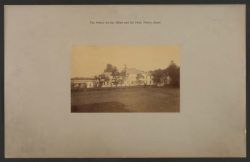Japanese Sign Language facts for kids
Quick facts for kids Japanese Sign Language |
|
|---|---|
| Native to | Japan |
| Native speakers | 320,000 (1986) |
| Language family |
Japanese Sign Language family
|
| Official status | |
| Regulated by | Japanese Federation of the Deaf |
Japanese Sign Language (日本手話, Nihon Shuwa), also known as JSL or NS, is the main sign language in Japan.
Contents
History
In 1878, the first school for the deaf was established in Kyoto.
In 1900, the Tokyo School for the Deaf (東京都立ろう学校, Tokyo ro-a gakko) was founded.
In 1948, Deaf children were required to attend school.
In the late-20th century, Japanese sign language began to be recognized.
The Japanese Federation of the Deaf is for those Japanese whose primary language is JSL.
JSL has a friend in the Imperial family. Kiko, Princess Akishino has studied JSL and is a trained sign language interpreter. She also signs in informal Deaf gatherings.
In 2006, the Japanese government amended the "Supporting Independence of People with Disabilities Act." The new language in the law encourages local governments to increase the number and use of JSL interpreters.
Elements of Japanese Sign Language (JSL)
As in other sign languages, JSL (usually called simply 手話 shuwa, "hand talk") consists of words, or signs, and the grammar with which they are put together.
Examples of JSL signs
- Monaghan, Leila Frances. (2003). Many Ways to be Deaf: International Variation in Deaf Communities. Washington, D.C.: Gallaudet University Press. ISBN: 9781563681356; OCLC 248814292
- Nakamura, Karen. (2006). Deaf in Japan: Signing and the Politics of Identity. Ithaca: Cornell University Press. ISBN: 9780801443503; ISBN: 9780801473562; OCLC 238810838
Images for kids
-
The yubimoji "tsu" imitates the shape of the katakana character "tsu" (ツ).
See also
 In Spanish: Lengua de señas japonesa para niños
In Spanish: Lengua de señas japonesa para niños







